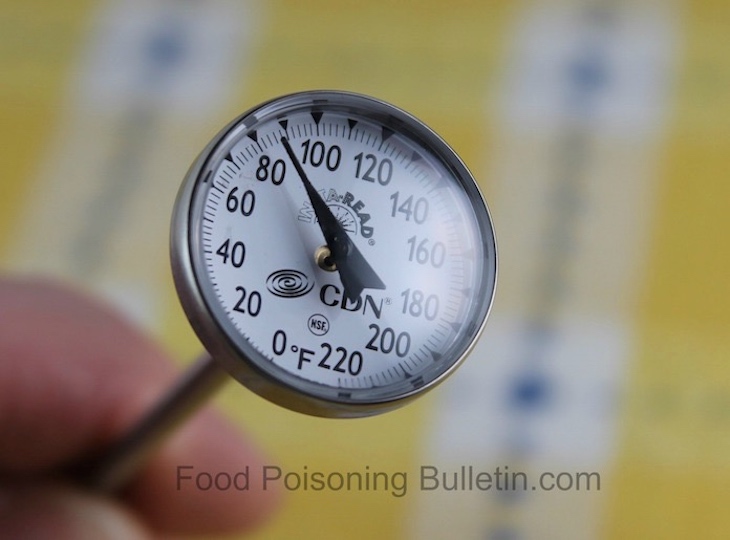With the holidays approaching, it’s important to keep food safety in mind. One of the best ways to ensure that the food you make and serve is safe to eat it to use a food thermometer. But do you know how to use a food thermometer correctly?

First, you should know that there are several types of food thermometers. The most inexpensive and common is a dial thermometer. This has a dial on a stem that is attached to a probe. You can find these thermometers are most grocery stores. This thermometer is not always the most accurate, but it will give you a general reading.
The second type is an oven-proof thermometer that you use while the food is cooking. A probe goes into the meat roast or whole chicken or turkey, then a cord extends outside the oven to the dial that shows the reading. These can be digital or dial thermometers. You remove the food from the oven when it reaches the safe final internal temperature (or 5°F below that temperature with a 5-minute covered stand time).
Candy thermometers have larger temperature ranges, since the sugar solutions are often cooked to 300°F. These utensils look like a ruler, with a bulb at the bottom. They clip onto the side of a saucepan. To use when making candy or syrups, make sure that the bulb is in the sugar syrup but not touching the bottom of the saucepan.
Finally, instant-read digital thermometers consist of a probe that is attached to a plastic body and folds out. The digital reading is the most accurate, but these utensils can be expensive. You should know that the thermometer will usually time out after a few minutes. To restart it, just clip the probe back into the body and open it up again.

You should use a food thermometer in any recipe that includes chicken, beef, pork, lamb, turkey, fish, seafood and eggs, including casseroles. These are the types of foods that are generally most often contaminated with pathogenic bacteria.
The University of Minnesota Extension Service offers great tips about how to use this kitchen utensil. To use a dial thermometer, insert the probe at least two inches into the thickest part of the food, making sure you avoid bone or fat, which can skew the reading. It should take about 15 to 20 seconds for the temperature to register.
For the large oven-proof thermometers, insert the probe into the meat at the beginning of cooking time and leave it there while the food roasts or bakes. Again, the thermometer should be inserted into the center of the food without touching bone or fat. The reading is checked as the food cooks.
Digital thermometers should be inserted at least 1/2-inch into the center of the thickest part of the food, avoiding that bone and fat. This type of thermometer will give you can accurate reading in about 5 seconds.
Always wash the probe with soap and water and dry it in between uses, even for the same food. The probe could carry bacteria from the underdone food and then you could re-contaminate the food the next time you insert it. And wash it when the food is done before you put it away.
You use the thermometer differently for different foods. For checking the temperature of thinner foods like hamburgers, pork chops, and pounded chicken breasts, insert the probe into the side of the meat. Always use a thermometer when you are first preparing the food, and again when reheating leftovers.
If your thermometer hasn’t been used for a while, or if you want to make sure it’s accurate, you can check it. Bring water to a full rolling boil in a deep pan. Immerse the probe 2-inches into the boiling water. The thermometer should read 212°F after 5 seconds for a digital thermometer, and 30 seconds of rate other types. You can calibrate some thermometers.
If you can’t adjust your thermometer, remember how much over or under 212°F it was during the boiling water test. Then add or subtract that amount when you test a food to discover the true temperature.
But if someone in your family is in a high risk group for severe complications from food poisoning, it’s best just to buy a new thermometer. It’s a small investment when compared to the cost of food poisoning.
Now that you know how to use a food thermometer, you can be assured that your food is as safe as you can make it.




